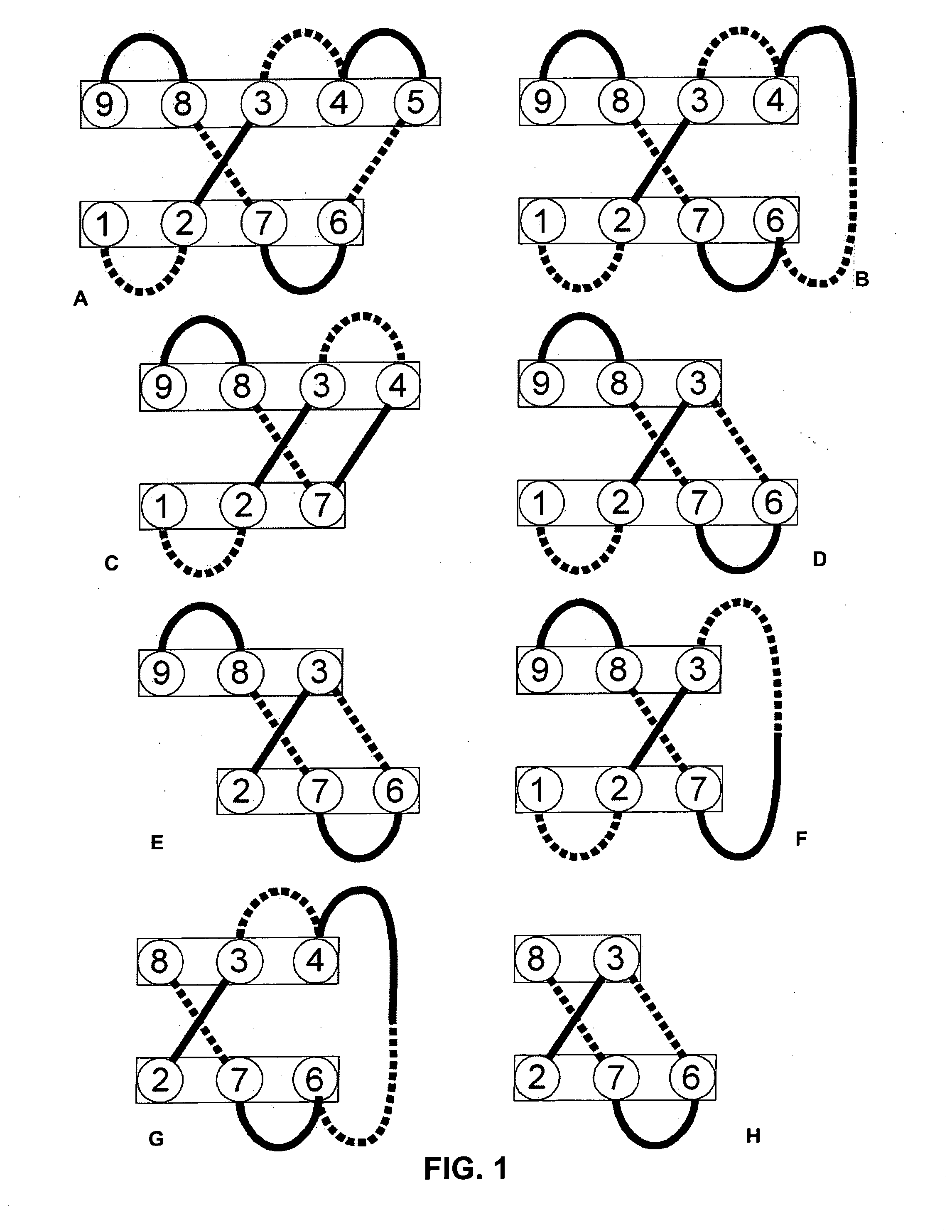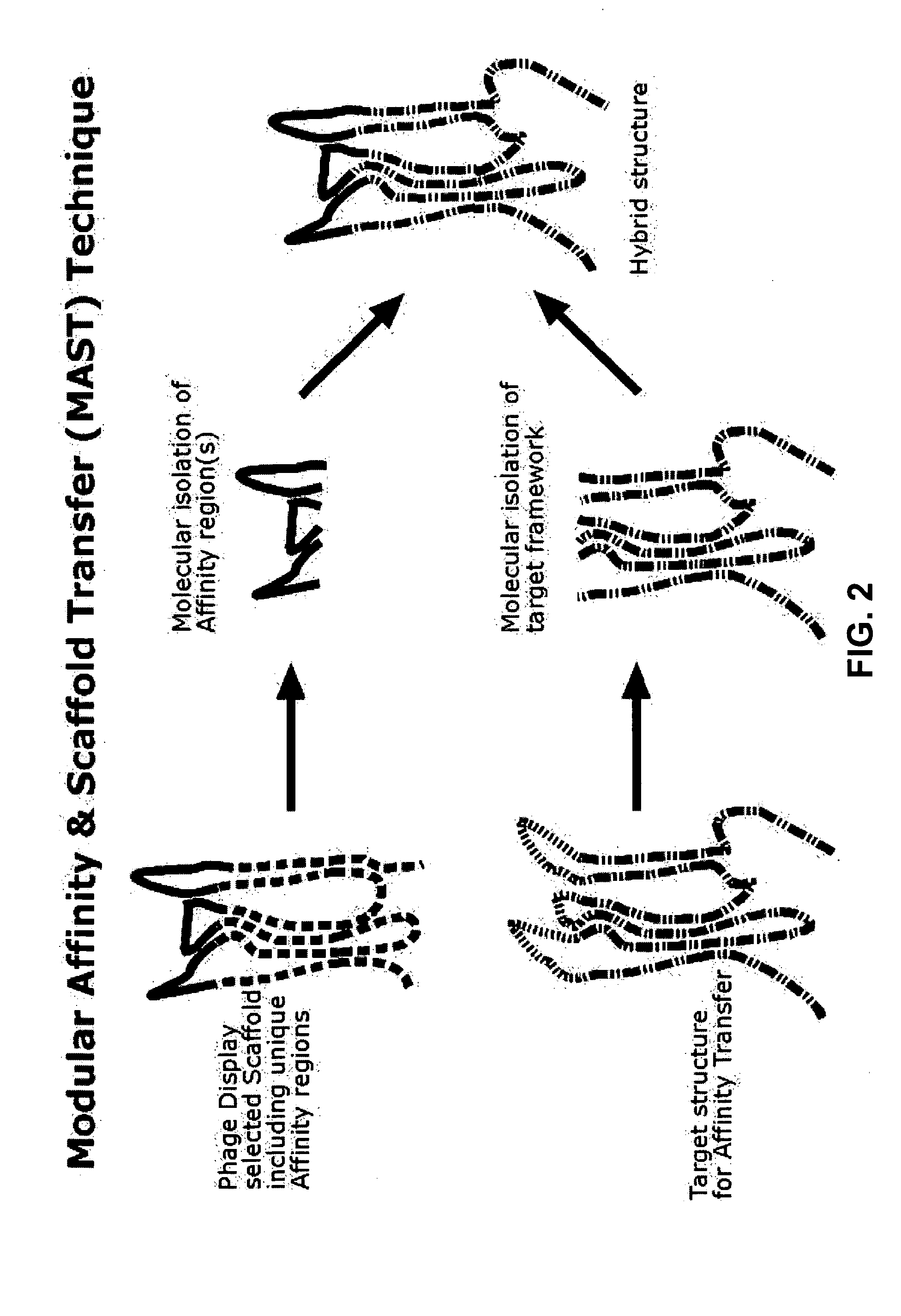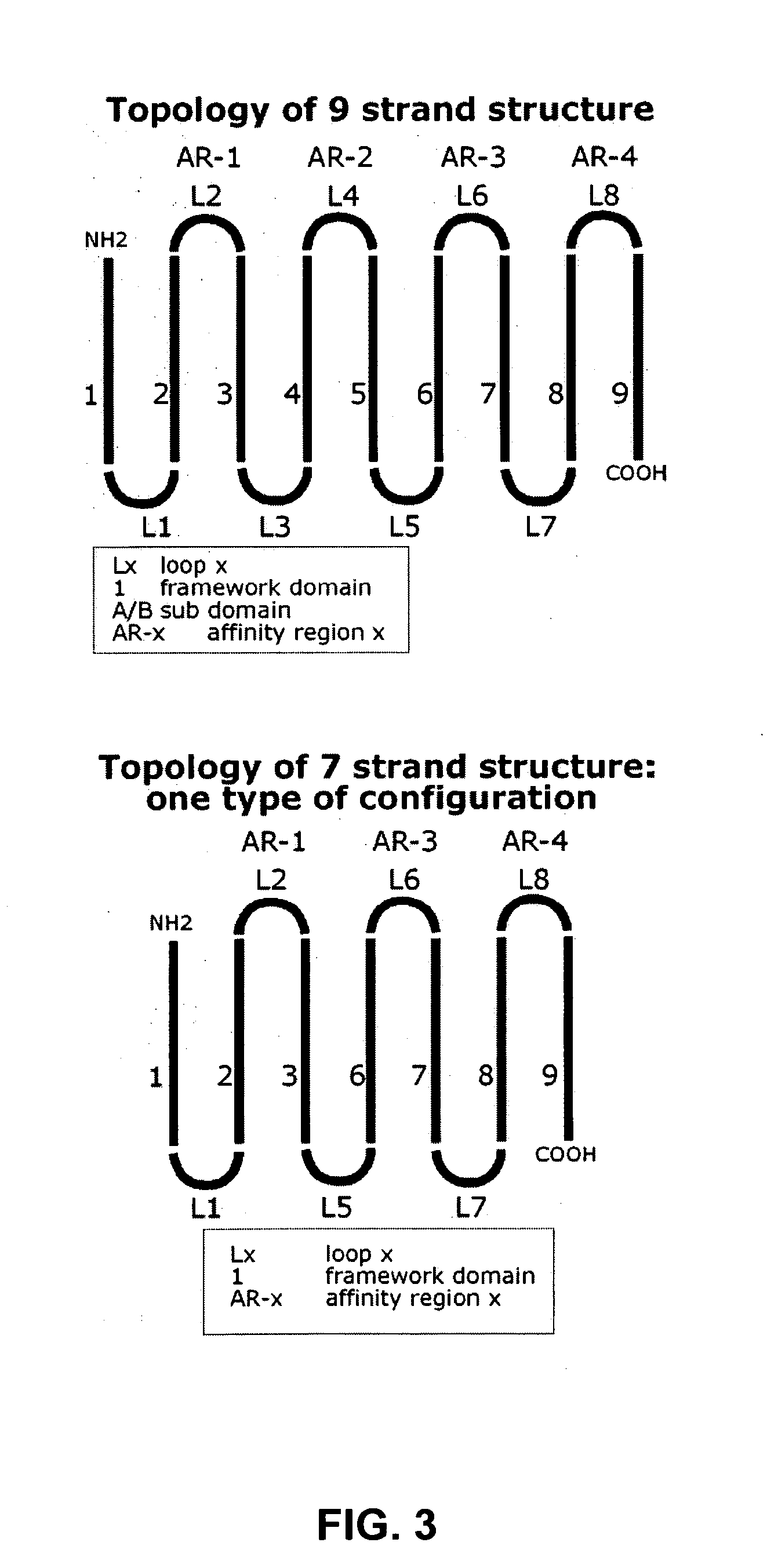Affinity proteins for controlled application of cosmetic substances
- Summary
- Abstract
- Description
- Claims
- Application Information
AI Technical Summary
Benefits of technology
Problems solved by technology
Method used
Image
Examples
example 1
Determination of Core Coordinates
[0246] Immunoglobulin-like (ig-like) folds are very common throughout nature. Many proteins, especially in the animal kingdom, have a fold region within the protein that belongs to this class. Reviewing the function of the proteins that contain an ig-like fold and reviewing the function of this ig-like fold within that specific protein, it is apparent that most of these domains, if not all, are involved in ligand binding. Some examples of ig-like fold containing proteins are: V-CAM, immunoglobulin heavy chain variable domains, immunoglobulin light chain variable domains, constant regions of immunoglobulins, T-cell receptors, fibronectin, reovirus coat protein, beta-galactosidase, integrins, EPO-receptor, CD58, ribulose carboxylase, desulphoferrodoxine, superoxide likes, biotin decarboxylase and P53 core DNA binding protein. A classification of most ig-like folds can be obtained from the SCOP database (Murzin A. G. et al., J. Mol. Biol., 247, 536-540...
example 2
Design of 9 Strands Folds
[0251] Protein folding depends on interaction between amino acid backbone atoms and atoms present in the side chains of amino acids. Beta-sheets depend on both types of interactions while interactions between two beta-sheets, for example, in the above-mentioned structures, are mainly mediated via amino acid side chain interactions of opposing residues. Spatial constrains, physical and chemical properties of amino acid side chains limit the possibilities for specific structures and folds and thus the types of amino acids that can be used at a certain location in a fold or structure. To obtain amino acid sequences that meet the spatial constrains and properties that fit with the 3D structure of the above described structures (Example 1), 3D analysis software (Modeller, Prosa, InsightII, What if and Procheck) was used. Current computer calculation powers and limited model accuracy and algorithm reliabilities limit the number of residues and putative structures...
example 3
Assembly of Synthetic Scaffolds
[0258] Synthetic VAPs were designed on basis of their, predicted, three-dimensional structure. The amino acid sequence (Table 3) was back translated into DNA sequence (Table 4) using the preferred codon usage for enteric bacterial gene expression (Informax Vector Nti). The obtained DNA sequence was checked for undesired restriction sites that could interfere with future cloning steps. Such sites were removed by changing the DNA sequence without changing the amino acid codons. Next the DNA sequence was adapted to create an NdeI site at the 5′ end to introduce the ATG start codon and at the 3′ end SfiI site, both required for unidirectional cloning purposes. PCR assembly consists of four steps: oligo primer design (ordered at Operon's), gene assembly, gene amplification, and cloning. The scaffolds were assembled in the following manner: first both plus and minus strands of the DNA sequence were divided into oligonucleotide primers of approximately 35 bp...
PUM
| Property | Measurement | Unit |
|---|---|---|
| Volume | aaaaa | aaaaa |
| Volume | aaaaa | aaaaa |
| Volume | aaaaa | aaaaa |
Abstract
Description
Claims
Application Information
 Login to View More
Login to View More - R&D Engineer
- R&D Manager
- IP Professional
- Industry Leading Data Capabilities
- Powerful AI technology
- Patent DNA Extraction
Browse by: Latest US Patents, China's latest patents, Technical Efficacy Thesaurus, Application Domain, Technology Topic, Popular Technical Reports.
© 2024 PatSnap. All rights reserved.Legal|Privacy policy|Modern Slavery Act Transparency Statement|Sitemap|About US| Contact US: help@patsnap.com










